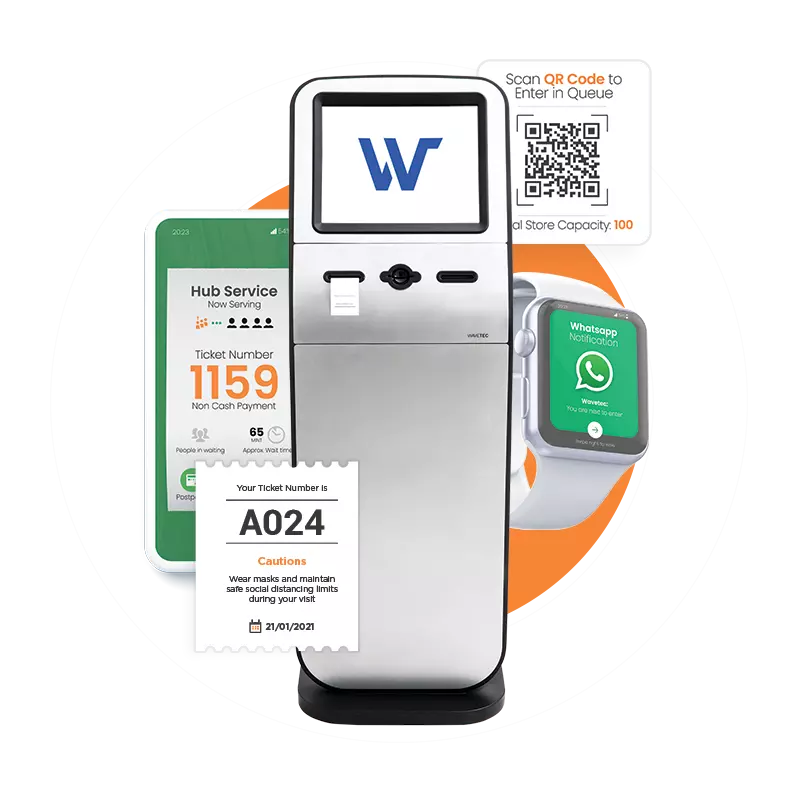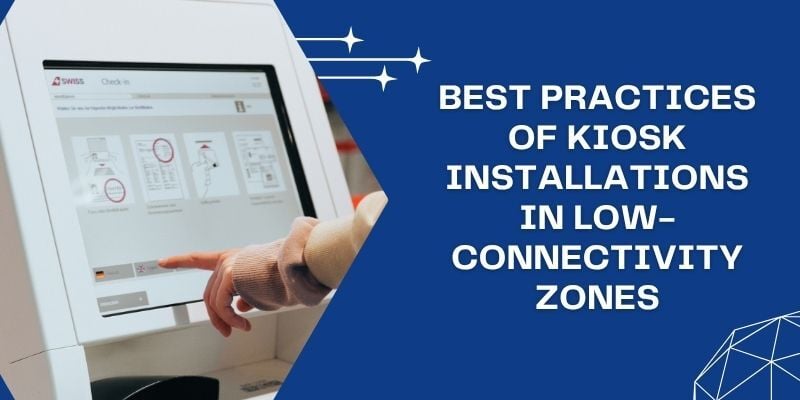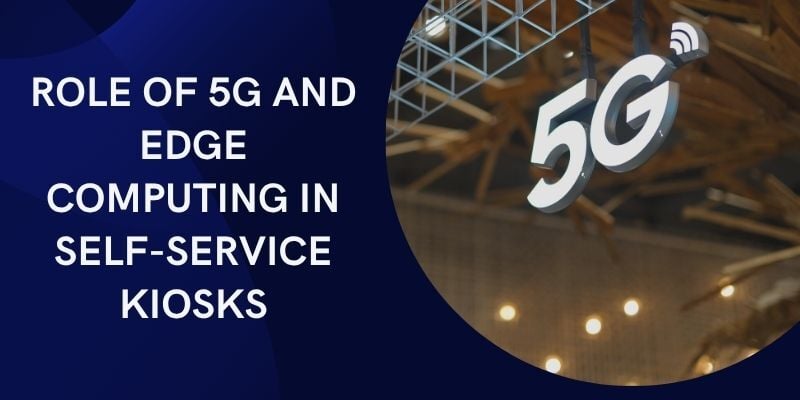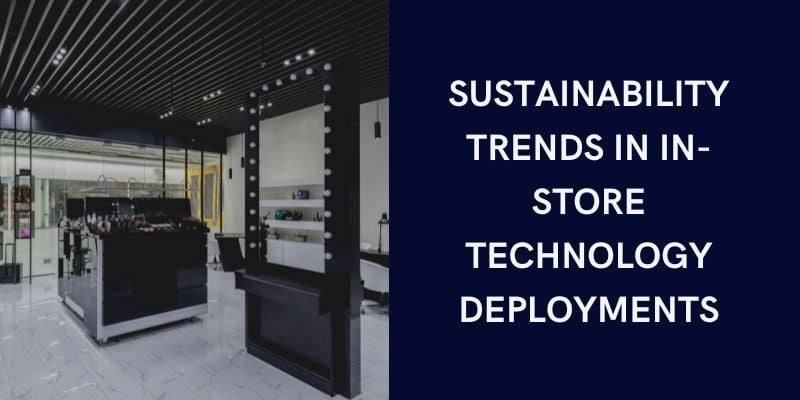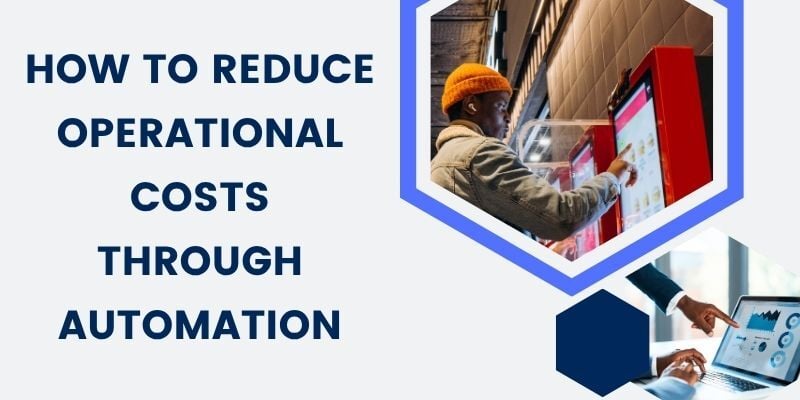In various aspects of daily life, from stores to transportation, queuing is a common occurrence. Waiting in line might seem ordinary, but it plays a crucial role in business operations and customer satisfaction.
A Queuing problem can lead to frustration, reduced efficiency, and financial losses. When queues are mismanaged, customers might experience longer waiting times, impacting their overall experience.
Issues like inadequate staffing, poor queue design, and lack of technological solutions can exacerbate the problem.
Recent studies have unveiled a remarkable revelation—digital signage is wielding its influence to reduce the perceived wait time at checkouts by an impressive 35 percent.
To address these challenges, businesses employ queuing theory and queue management techniques. By analyzing queue patterns, optimizing service rates, and implementing virtual queuing systems, companies can minimize wait times and provide a smoother customer experience.
In this write-up, we shall look at all this and more in detail. So, let’s dive in!
What is a Queuing Problem?
A queuing problem, also known as a waiting line problem, refers to scenarios where individuals or entities wait in line for service, leading to challenges in managing these waiting lines effectively.
These situations occur across various sectors, such as retail, healthcare, telecommunications, and transportation. The primary goal is to optimize resource usage, minimize customer wait times, and enhance overall service quality.
Queuing Theory and Components
Queuing theory, a mathematical framework, analyzes and models queue behavior. It relies on formulas and mathematical models to predict and understand queue dynamics. Key components encompass:
- Arrival Rate: The rate at which customers join the queue.
- Service Rate: The speed at which each customer is served.
- Queue Length: The number of customers in the queue.
- Wait Time: The time customers spend waiting in line.
Utilizing relevant formulas and models, businesses make informed decisions about staffing, queue design, and the integration of technologies like virtual queues or self-service kiosks.
Effectively addressing queuing problems and formulas improves operational efficiency and customer satisfaction by reducing wait times and streamlining the customer experience.
How To Improve the Queue Problem and Waiting Experience?
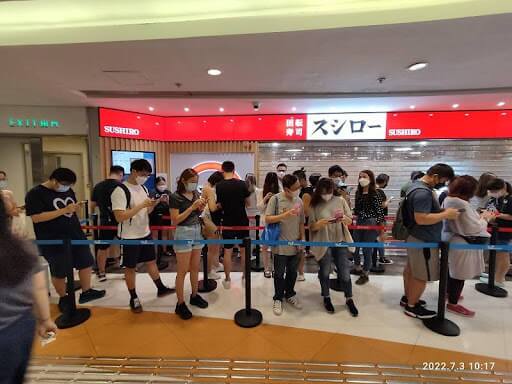
Waiting in queues is unavoidable in various service-oriented industries, ranging from healthcare facilities to retail stores. The challenge lies in efficiently managing queues to minimize wait times and create a positive customer waiting experience.
By implementing effective strategies and employing queuing theory, businesses can solve queuing problems and significantly enhance customer satisfaction.
Understanding the Data
- Data Table Queuing Problem: Begin by gathering data related to customer arrivals, service times, and queue lengths. This data forms the foundation for analyzing and solving queuing problems. A data table approach allows you to visualize patterns and trends, aiding in identifying bottlenecks and areas for improvement.
Solving Queuing Problems
- Optimized Staffing: Utilize historical data to determine peak hours and allocate staff accordingly. Having the right number of staff during busy periods can prevent long queues, reduce customer frustration, and solve queuing problems.
- Queue Design: A well-designed queue layout prevents confusion and ensures a smoother flow of customers. Clear signage and barriers guide customers, preventing unnecessary crowding and improving overall efficiency as well as waiting for line problems and solutions.
- Multi-Channel Approach: Implement a multi-channel approach, offering customers various options for joining the queue, such as in-person, online, or via a mobile app. This reduces physical wait times and enhances convenience.
- Virtual Queuing Systems: Integrate technology by using a queue online system. Customers receive notifications about their turn, allowing them to wait comfortably without being physically present in line.
- Self-Service Kiosks: Implement self-service kiosks for routine tasks, reducing the number of customers in the queue for human-assisted services.
Enhancing the Waiting Experience
- Real-Time Information: Display estimated wait times and queue status prominently. Transparent communication manages customer expectations and reduces perceived wait times.
- Entertainment and Comfort: Create a pleasant waiting environment by providing comfortable seating, reading materials, or digital screens with informative content.
- Mobile Updates: Keep customers informed through mobile updates, allowing them to explore nearby areas or complete other tasks while waiting.
- Staff Training: Train staff to efficiently manage queues, address customer inquiries, and ensure a positive atmosphere.
- Feedback Mechanism: Collect feedback from customers regarding their waiting experience. Use this input to refine your queuing strategies continually.
In conclusion, addressing the queue problem and enhancing the waiting experience requires a combination of data analysis, strategic implementation, and customer-centric approaches.
By leveraging queuing theory principles and employing modern technologies, businesses can solve queuing problems and create a more satisfying and efficient customer journey.
How Does A Queue Management System Solve a Queuing Problem?
A Queue Management System (QMS) plays a pivotal role in solving queuing problems by introducing streamlined processes and leveraging technology to enhance the overall waiting experience for customers.
1. Optimized Customer Flow
- A QMS strategically organizes customer flow, ensuring that arrivals are evenly distributed, preventing sudden rushes and long queues during peak hours.
- By intelligently managing the arrival rate, the system reduces congestion, leading to shorter wait times and improved customer satisfaction.
2. Efficient Staff Allocation
- The QMS utilizes historical data to predict busy periods, allowing businesses to allocate staff resources accordingly.
- Staff members can be directed to specific service points based on real-time demand, preventing understaffing and overstaffing situations.
3. Real-time Visibility
- QMS offers real-time visibility into queue lengths, estimated wait times, and service availability.
- Customers are informed and prepared for their turn, minimizing anxiety and uncertainty associated with waiting.
4. Service Channels
- QMS integrates various service channels, including physical, virtual, and self-service kiosks.
- This flexibility empowers customers to choose their preferred mode of waiting, reducing the need for physical lines.
5. Customer Experience Enhancement
- Virtual queuing allows customers to join the line remotely, providing them the freedom to engage in other activities while waiting.
- The system sends notifications when their turn is approaching, minimizing perceived wait times.
6. Efficient Queue Distribution
- The QMS intelligently assigns customers to service points based on service type and needs.
- This prevents bottlenecks and ensures balanced workloads for each service area.
7. Data-driven Insights
- The system collects and analyzes data, offering insights into queue patterns, service times, and customer behavior.
- These insights enable businesses to make informed decisions for process improvements.
8. Enhanced Staff Productivity
- By optimizing queue distribution and eliminating manual interventions, staff can focus on delivering quality service rather than managing queues.
9. Continuous Improvement
- The QMS allows businesses to monitor queue performance over time and make necessary adjustments to optimize processes further.
- Customer feedback and system analytics contribute to ongoing enhancements.
A Queue Management System resolves queuing problems by coordinating an efficient customer flow, leveraging technology to provide real-time information, and offering flexibility in waiting options.
By addressing these challenges, businesses can provide a smoother, more satisfying waiting experience while boosting operational efficiency.
Best Ways to Improve Queuing Problems with Solutions

Waiting in line for problems is a universal experience, but it doesn’t have to be frustrating. By recognizing and addressing common queuing problems, businesses can significantly improve the waiting experience for their customers.
Let’s explore some of these challenges and the practical solutions that can make waiting smoother.
1. Problem: Long Wait Times
Customers frequently find themselves trapped in long queues, leading to impatience and discontent.
Solution: Optimize Staffing
Adjust staffing levels based on historical data to ensure efficient service during peak hours. This minimizes wait times and ensures a smoother customer flow.
2. Problem: Unclear Information
Customers often feel left in the dark, unaware of their position in the queue or the expected wait time.
Solution: Real-Time Updates
Implement visible displays that provide real-time information on estimated wait times and queue status. Transparent communication reduces customer anxiety and confusion.
3. Problem: Perceived Inequity
Customers might feel that others are being served faster, causing frustration and negative perceptions.
Solution: Fair Queuing
Introduce fair queuing mechanisms that prioritize customers based on factors like arrival time or urgency. This ensures an equitable distribution of service and reduces customer dissatisfaction.
4. Problem: Limited Waiting Options
Customers are constrained to physical lines, limiting their choices and convenience.
Solution: Multi-Channel Queuing
Incorporate virtual queues, online appointments, and self-service kiosks. This provides customers with a range of waiting options, enhancing their flexibility and convenience.
By recognizing these queuing problems and implementing the suggested solutions, businesses can transform waiting experiences into positive interactions, fostering customer satisfaction and loyalty.
Queuing Problem – FAQs
What Is an Example of a Queuing Problem?
An example of a queuing problem is waiting in line at a busy coffee shop during the morning rush hour. Customers experience varying wait times due to factors like limited baristas and uneven customer arrivals.
How Do You Solve Queuing Problems?
Queuing problems can be solved by analyzing arrival rates, service rates, and queue lengths using queue management solutions. Optimizing staffing, using virtual queues, and improving queue design are common strategies.
What Is the Queuing Problem in Operations Research?
In operations research, queuing problems involve modeling and analyzing waiting lines. It aims to minimize customer wait times, enhance resource utilization, and improve overall service efficiency through mathematical and analytical techniques.
Conclusion
To sum up, dealing with a queueing problem is essential to make sure customers have a good experience. These issues are common in many places, like stores and banks.
By using smart ideas like virtual lines and better planning, businesses can make waiting times shorter and customers happier.
Remember, using these solutions helps things run smoother and makes customers feel better about their wait. So, queueing problems can turn into chances to provide better service and make everyone happier.
BOOK A FREE DEMO
